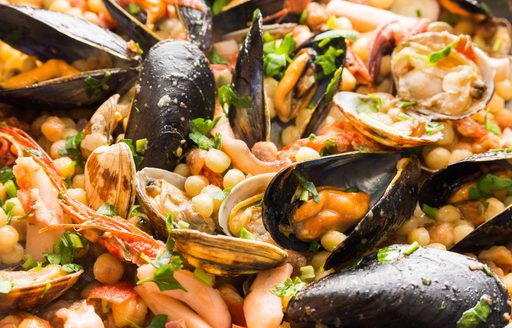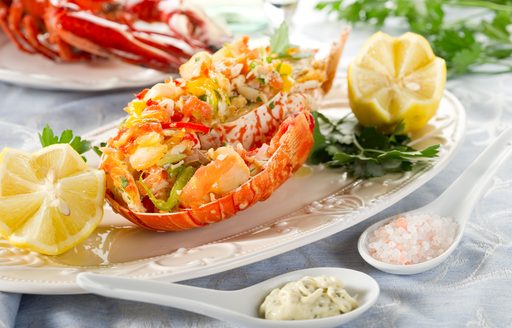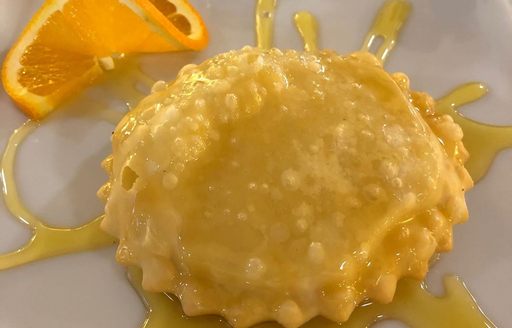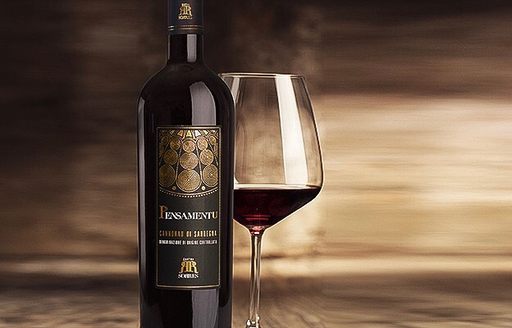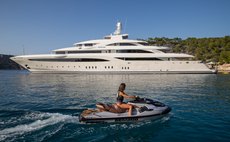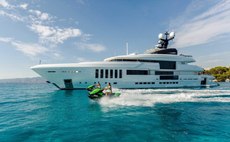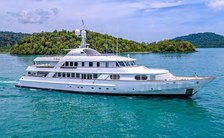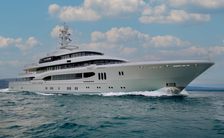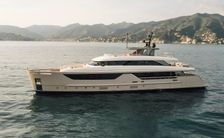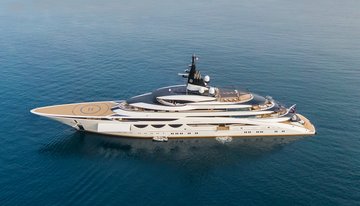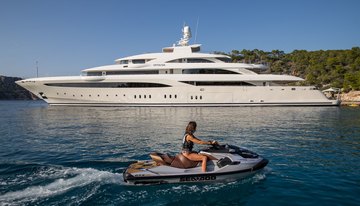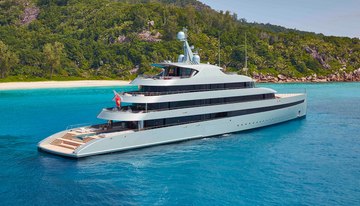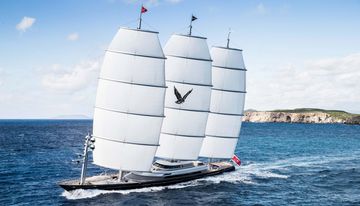Sardinian cuisine is wonderfully unique, always full of flavour and well worth sampling on your Sardinia yacht charter vacation.
With a clear connection to Italian cuisine, Sardinian dishes also take inspiration from Spain and North Africa, echoing the civilisations that have passed this way over the centuries.
The cuisine on offer also appears to champion health and wellbeing. National Geographic has identified Sardinia as one of seven 'Blue Zones' around the world, which are home to the largest concentrations of centenarians, with the Mediterranean diet clearly playing a role in the locals' remarkable vitality.
Make sure you explore the distinctive character of the island's food and drink when you visit on your yacht charter vacation. And before you do, read our culinary guide, choose your favourite delicacies and impress friends with your local knowledge.
From exceptional seafood and homemade pasta to some excellent wines, there is plenty to enjoy.
Fregula, a type of pasta made of small pellets of durum wheat semolina, originates from southern Sardinia, but you will find it on menus all over the island. It is similar to couscous, an indication of the north African influence on Sardinia's cuisine.
Traditionally fregula is served with seafood, often clams, with the addition of local saffron. Nutty and chewy in texture, fregula - literally 'little fragments' - are hand-rolled and toasted. It's usually served as a first course, although a hearty dish of fregola con arselle - fregola with clams - makes a tasty light lunch on a warm day, best accompanied by a chilled glass of white Sardinian wine.
Fregula, served with a delicate seafood sauce, is the signature dish of Maurizio Locatelli, executive chef at Cala di Volpe in Porto Cervo, so this is the perfect venue to try this Sardinian speciality for yourself.
Locals refer to bottarga as the 'gold of Sardinia', which gives an idea of how highly they prize this versatile ingredient. Also known as 'Mediterranean caviar', bottarga is cured fish roe, usually from the grey mullet, most of which is sourced from the Cabras Lagoon on the west coast of the island. In some regions of Sardinia, tuna roe, which has a stronger flavour, is used.
The labour-intensive curing process results in a solid block of amber-coloured bottarga, which is grated over salads and pasta dishes, just like parmesan or truffle. It adds an intense savoury, salty taste of the sea to dishes such as tagliatelle di calamaro - squid tagliatelle - or sometimes paired with burrata cheese. Bottarga is also served in thin slices with olive oil, as an appetiser, or in salads with seafood.
Bottarga is served at many of Sardinia's best restaurants. In Porto Cervo, try Quattro Passi al Pescatore, which offers a panoramic waterfront setting for high quality seafood.
-
Quattro Passi Al Pescatore
Restaurant
A Sardinian version of ravioli, these generously-proportioned dumplings are traditionally stuffed with mashed potato and pecorino cheese, with a touch of mint, before being lightly boiled. They are a rich and filling first course and are normally served with a simple tomato sauce.
Culurgiones originate in the Ogliastra region of eastern Sardinia, so if you are visiting this area, you'll find them on the menus of most restaurants. In Porto Cervo, try Quattro Passi al Pescatore or if you are visiting Cagliari, Niu serves tasty and colourful cullurgiones stuffed with either fish or vegetables.
-
Niu
Restaurant
Sea urchins, or, as they are known in the local dialect, bogamari - riccio di mare in Italian - are a much prized delicacy in Sardinia, especially in the spring; there is even a festival dedicated to these sea creatures in Alghero, the Sagra del Bogamari, held throughout March. Simply cooked in oil, they are often served with spaghetti as a first course, or on their own as an appetiser with freshly baked bread and a glass of white wine. Many restaurants in Alghero, such as Al Tuguri, will feature bogamari as a seasonal dish on their menus.
Sardinia is a dream destination for seafood lovers. Langoustines, red prawns, clams, sea bass, red mullet, squid and octopus are all worth trying, as is Catalan style lobster, a speciality of Alghero, served with a light salad of tomatoes and onions and dressed with olive oil and lemon. If you are visiting this area, you can try it at Al Tuguri, a traditional restaurant in the centre of town with a good wine list. In the Golfo Aranci, Blù is a good choice for lobster.
-
Blù Restaurant
Restaurant
-
Al Tuguri
Restaurant
Seadas is one of the most popular traditional Sardinian desserts, which you'll find in restaurants and bakeries around the island. A round, sweet semolina dumpling, it is filled with pecorino cheese and lemon peel and deep-fried.
The seadas is served hot and drizzled with honey, offering an unusual but very tasty combination of flavours and textures. It's just the thing to round off your authentic Sardinian meal. Try them at Blù in the Golfo Aranci or Niu in Cagliari.
-
Niu
Restaurant
Sardinia produces a wide variety of excellent cheeses, made from cow, sheep or goat milk, with numerous regional varieties to try. The most popular is Pecorino Sardo, a sheep's milk cheese also known as Fiore Sardo. It's a hard cheese, with a salty, nutty taste, best enjoyed grated over pasta dishes or paired with a glass of Malvasia di Bosa.
From western Sardinia, near Oristano, Casizolu is a distinctive pear-shaped cheese, made from stretched-curd cow's milk. It's an aged cheese with a slightly grassy, spicy taste, and is sometimes used as a filling for the traditional seadas dessert.
One rather unusual cheese, made only in Sardinia, is Casu Marzu - literally 'rotten cheese', which contains live maggots. Unsurprisingly, perhaps, it is technically illegal under EU law, but the locals have a taste for this type of fermented pecorino, and it is still made for special occasions.
Wine has been made in Sardinia since the Bronze Age, but even today, comparitively little is exported, and can be hard to find overseas. All the more reason to seek out and enjoy some of these excellent wines while you are here.
Sardinia's best known, and most popular, wine is Cannonau, the local name for grenache. It is an indiginous grape variety, used to produce intense and rounded red wine, as well as rosé, and the best examples come from the Nuoro, Ogliastra and Cagliari regions. Cannonau accounts for almost a third of Sardinia's wine production, while there are many more varieties to look out for, too.
Try Vernacchia di Oristano, another variety with an ancient Sardinian pedigree, from the west coast of the island. Full-bodied and aromatic, it's a perfect aperitif or an accompaniment for your seadas. Vermentino di Gallura, from the northeast, is a straw-coloured wine which pairs well with seafood, while if you're looking for something sweet, try Malvasia di Bossa, from the region south of Alghero, and regarded as one of Italy's finest dessert wines.
Mirto is the quintessential Sardinian liqueur, made from the berries of the wild myrtle plant, which grows across the island.
The drink, which has a sweet herbal aroma, comes in two varieties, a dark red version and a white mirto, and is traditionally served well chilled as a digestif after dinner. Be sure to ask for a glass at the end of your meal for a true taste of Sardinia.
To learn more about arranging a private yacht vacation in Sardinia, speak to your preferred yacht charter broker.
Alternatively, view all luxury yachts for charter in Italy.



